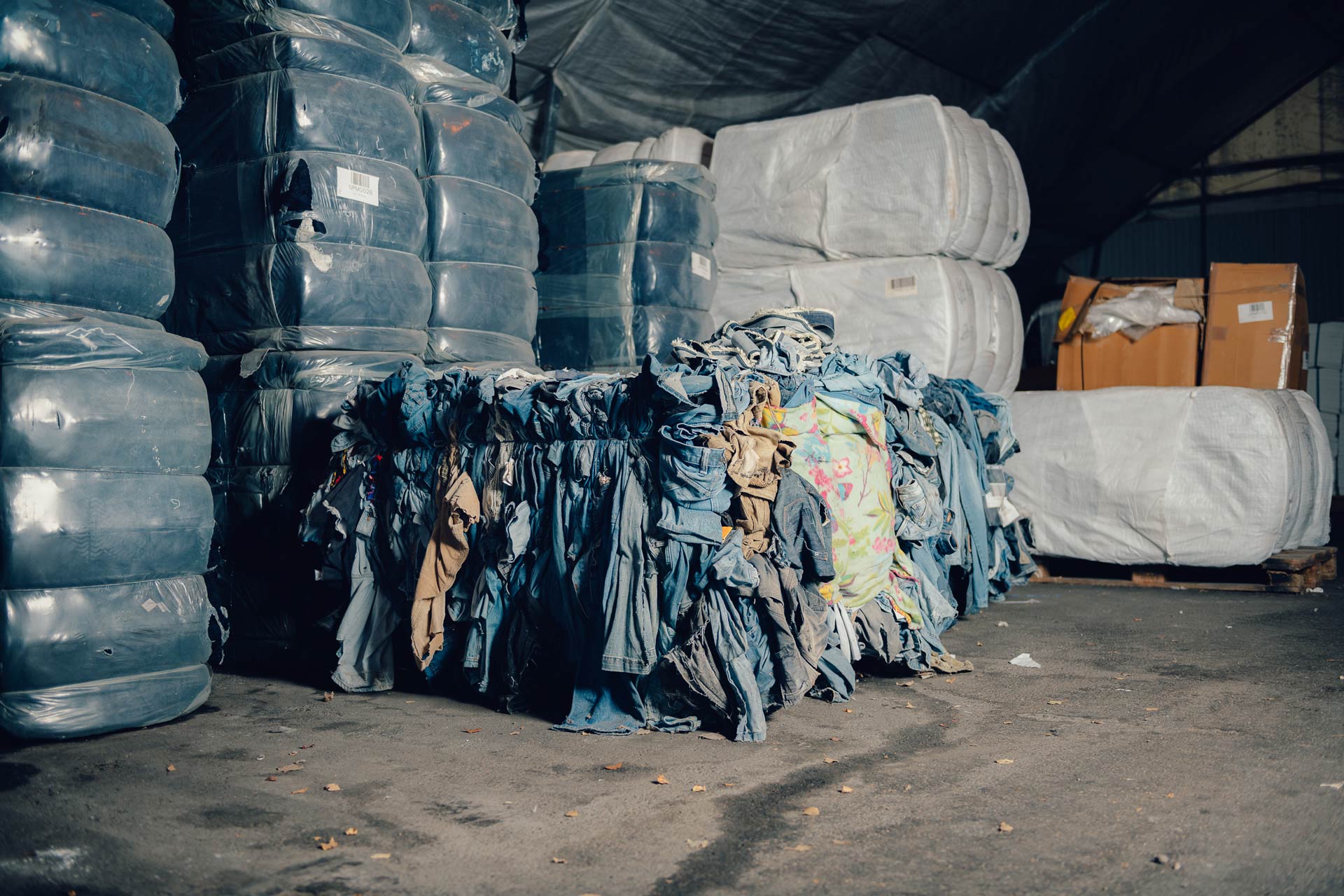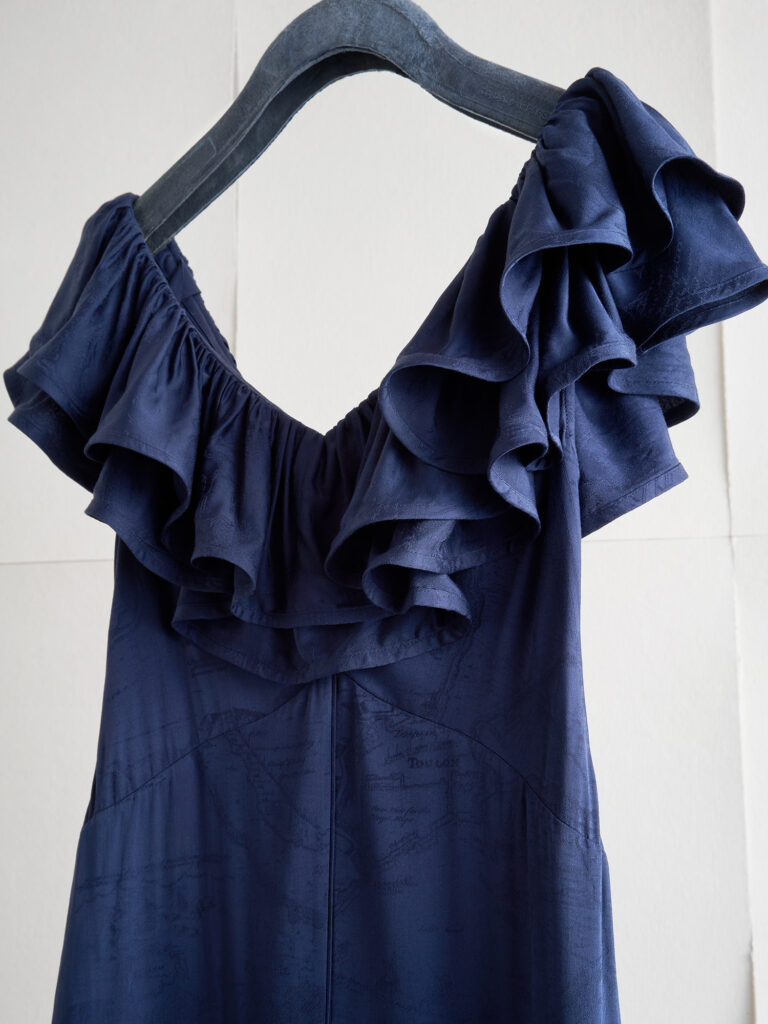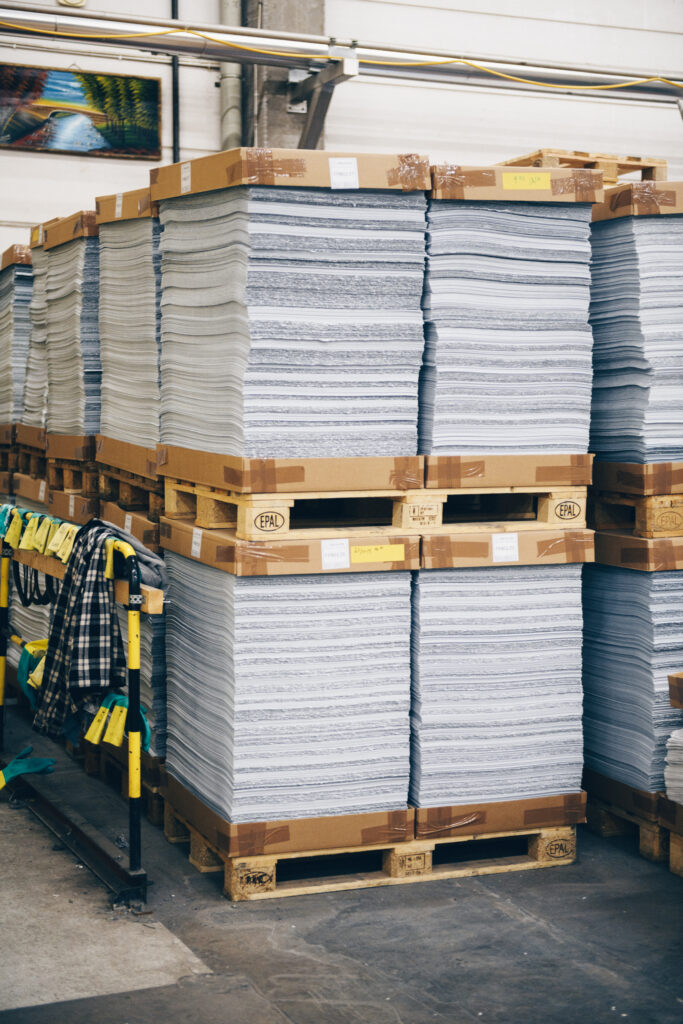
Fashion is hurting the planet. That’s a fact and we all know it. If the world’s population increases as expected, there will be 8.5 billion people by 2030. People are getting richer too, and as 1.7 billion people enter the global middle class over the coming years, demand for clothes will grow. But producing even more apparel will have significant negative impact on land, wildlife, water supplies, CO2 emissions, plastic pollution and chemical use and cause even more waste. Nowadays fashion is only worn for such a short period of time. If trends hold, the world is on track to consume 160 million tonnes of textiles every year by 2030, with almost all of it ending up in oceans, landfills or incinerators after just a few years.
“Going sustainable is a question of survival for the industry now, and for all of humanity long term.” Renewcell
Renewcell’s technology offers brands a single solution to two of the fashion industry’s major challenges: resource use and waste. If one kilo of clothing is recycled instead of being produced from virgin cotton, oil or wood, it saves thousands of liters of water and decreases land use, waste, plastic pollution and emissions of both CO2 and chemicals. It helps brands deliver on their promises to reduce their negative impact.
“Our vision is to inspire an Industrial Evolution to a sustainable world.” Renewcell

Industrial Revolution. Renewcell is a fast-growing Swedish sustaintech company with a unique textile recycling technology and a team of people on a mission to change the fashion industry for the better. The founders, a group of scientists at KTH the Royal Institute of Technology in Stockholm, had been researching more efficient ways of producing bioethanol by finding a new technique to decompose cellulose. As work progressed they realized that their method could be successful in decomposing the cellulose in cotton and viscose. They were convinced that this could be the key to recycling textiles on a massive scale and make fashion sustainable. In January 2012 they founded Renewcell.
In July 2014 a model walked down a catwalk and into history. The yellow dress she was wearing was made out of blue jeans that had been recycled with Renewcell’s patented technology. Following growing interest from the fashion industry, the first industrial scale Renewcell plant opened in Kristinehamn, Sweden in 2018. In 2020 garments made from Circulose® recycled in Kristinehamn became available for anyone to buy from leading brands worldwide. Renewcell had proven that recycling clothes finally works.
“Hundreds of millions of garments will be saved from landfill and incineration each year” Renewcell
Demand for Circulose® recycled fashion has soared. What started as a bold idea in a lab in 2012 is now on its way to change a global industry. To be able to recycle enough clothes to make a real difference, Renewcell is now investing in expanded capacity. At the new plant under construction in Sundsvall, Sweden, hundreds of millions of garments will be saved from landfill and incineration each year.

Production Process. Renewcell receives used garments and textile production waste with high cellulosic content, like cotton or viscose. The textiles are shredded, de-buttoned, de-zipped, de-colored and turned into a slurry. Contaminants and other non-cellulosic content are separated from the slurry. The slurry is dried to produce a pure, natural Circulose® branded dissolving pulp made from 100% recycled textiles. The sheets of Circulose® are finally packaged into bales and fed back into the textile production value chain as a replacement for virgin materials like cotton, oil and wood.
Circulose The original Cellulose is the most abundant organic polymer in the world. It’s what makes up the cell walls of most plants and trees. The purest cellulose found in nature is cotton. Circulose® is a branded dissolving pulp product that Renewcell makes from 100% textile waste, such as worn-out jeans and production scraps. Dissolving pulp cellulose is what the textile industry uses to make viscose, lyocell, modal, acetate other types of regenerated fibers (also called ‘man-made cellulosic fibers’). The only difference with Circulose® is that it’s made from textile waste instead of wood. The Circulose® brand is a registered trademark owned by Renewcell.
“But that’s just the beginning.” Renewcell
Business and Future. In 2020 the Circulose® product was listed as one of the 100 best inventions of 2020 by the TIME Magazine and by Fast Company listed as one of the year’s “World Changing Ideas”.
“2020 was a milestone year for Renewcell’s history. We began the year as a small company with promising technology for the future and ended it as a listed company with a commercially proven product, an order book of almost SEK 2 billion and a lease in place for establishing the world’s largest chemical textile recycling plant”, says CEO Patrik Lundström. At the moment Renewcell is underway with preparations to establish operations at Ortviken’s industrial area in Sundsvall for the first half of 2022.
The pandemic would have forced companies, investors and people to see world around them from a new perspective. For Lundström is clear, “that the situation has boosted commitment to the necessary transition toward sustainability in the fashion industry”. Many companies would emerge from the coronavirus crisis with a strong sense of optimism for sustainable change.
In September 2020 Renewcell and H&M have entered a multi-year partnership to replace virgin fibers with recycled textiles in fashion products. They have cooperated in different ways since the founding of Renewcell in 2012. Now building on the successful introduction of Circulose in the SS2020 Conscious Exclusive collection, H&M committed to scale up the use of the material over the course of five years. The agreement seems to be the first of its kind in the industry and marks a significant step forward in the development of circular economy for fashion. Big fashion brands like H&M appear to use the sustainable sign not only for marketing, but see the urgency and become more active.
„I am thankful that we have the wind at our back”, says CEO Patrik Lundström.
Government and Institution Support. Renewcell receives support from various institutions. The circular economy package of the EU maintains that all local authorities in the EU must collect and separate textile waste by 2025 and that incineration and landfill will be prohibited. In Sweden the national producer responsibility for textiles rises in light of the EU’s future regulations. Particularly in Sweden, investments with a sustaintech scope are increasingly attractive in the capital markets. CEO Lundström is convinced: “The foundations are in place, now it is time to make the textile industry circular!”.
This is a news article. Read more about the journalistic work in Karlstads studenttidning here.